- Czech Republic
- United Kingdom
- Photography

A Guide to Visiting Selinunte Archaeological Park

Would you believe that Sicily is home to some of the most impressive and well-preserved Greek ruins outside of Greece? Let me answer that question for you with this guide to visiting Selinunte Archaeological Park!
The south coast of Sicily is surprisingly home to not one but two of the most incredible Greek ruins you’ll ever see. The Ancient Greeks spread their civilization across the Mediterranean and, thankfully, the ruins of two of their colonies at both Selinunte and the Valley of the Temples in Agrigento have withstood the test of time. Both of these archaeological sites now contain some of the best preserved Greek temples outside of Athens.
Whilst the Valley of the Temples is the most popular, with many day trippers from the cruise ships visiting, I have to wonder whether this has been thanks to some clever marketing. Certainly the guides we spoke to might have though as much…
From what I’ve seen, the Valley of the Temples is beautiful and clearly a must-visit but I’m here to tell you all about Selinunte Archaeological Park; the largest archaeological park in Europe.
A GUIDE TO VISITING SELINUNTE ARCHAEOLOGICAL PARK
The ancient city of Selinunte dates back to approximately 628 BC and was one of the most important cities in Sicily, second only to Palermo. With importance came money and the Ancient Greeks used it wisely; to build no less than seven temples dedicated to Gods and Goddesses including Aphrodite and Zeus. One of the temples, Temple C dates back to around 560-550 BC!
At its peak, Selinunte would likely have been home to around 30,000 inhabitants before it was pretty much destroyed by the Carthaginians following their takeover in 409 BC. Unfortunately, it seems that the city was never rebuilt and lay in ruins pretty much as is seen today.
Two final interesting facts, before we look into what you can expect to find at the Selinunte Archaeological Park, are that firstly, Selinunte means ‘celery’ and recent archaeological work has found that the ancient world’s largest agora (sort of like a city square or open space) is right here – 33,000 square metres!

THE ‘EAST’ TEMPLES
Selinunte Archaeological Park is home to at least seven temples, within the 270 hectares, built in the Greek Doric Style though only one, Temple E, remains standing. The rest are in ruins of some form or another but, again, still rather impressive.
Upon entering the park, you’ll naturally wander up to the stunning Temple E with its ancient columns in almost perfect condition. However, a controversial decision meant that Temple E is actually a re-built version of the original. In its heyday, the temple would have been painted beautiful colours even though now what we see seems grand enough!
Behind Temple E lie the collapsed ruins of both Temple F and G, each more monumental than the last. Whilst Temple G was probably never completed, it would still been considered the fourth largest Doric temple in the Greek world (the 2nd largest in Sicily however!). What a view it would have been sailing towards Sicily with these temples towering over the cliffs. We were able to scramble over the ruined blocks and columns as part of our guided tour. Our guide stood next to one of the remaining upright columns that gave a great sense of scale; until we were told that actually the total height would likely have been around 30 metres. That is huge!

THE ACROPOLIS
A short land-train journey away from the East Temples is the Acropolis and the remains of a bustling Carthaginian city. There are the ruins of an additional four Greek temples here with palm trees effortlessly framing a row of columns of Temple C.
The East Temples were more impressive, probably quite obviously given the re-building of Temple E, but it was great to wander through the ancient streets of the city imagining what life might have been like all those thousands of years ago.

KEY INFORMATION
The Selinunte Archaeological Park can be accessed for just €6 per person and is best visited with a rental car; there’s a large car park on-site. It will take around an hour from Trapani and an hour and a half from Palermo. From Selinunte, you can reach Agrigento in just over an hour too.
If you’re relying on public transport, the best way to reach the park is to take a train from Trapani or Palermo to Castelvetrano which is then linked by bus. The bus takes in the region of 30 minutes and, from the drop off point, it’s only a short walk to the entrance. This sort of journey will take some prep work but you’ll find the current (November 2023) timetable for the Marinella di Selinute service here .
For those fancying a bit of a break along with some food and drink, look no further than Gelateria del Porto within the park itself. Expect stunning views along the coastline as well as refreshingly zingy granita (the lemon flavour helps in the sun!) and ice cold beer!

MY 2024 TRAVEL PHOTOGRAPHY GEAR
FUJIFILM X-T5 FUJIFILM 18MM F/1.4 FUJIFILM 23MM F/1.4 FUJIFILM 35MM F/1.4 FUJIFILM 50MM F/2 FUJIFILM 50-140MM F/2.8 PEAK DESIGN STRAPS
RECOMMENDED TRAVEL RESOURCES
BOOKING.COM EXPEDIA HOTELS.COM GET YOUR GUIDE SKYSCANNER
READ MORE OF MY LATEST ARTICLES BELOW

A Guide To Visiting Raby Castle In County Durham
Posted on August 28, 2024 by [email protected]

A (Not So) Magical Stay At Center Parcs Whinfell Forest
Posted on August 22, 2024 by [email protected] / 2 comments

A Guide To Visiting Brocksbushes Farm in Northumberland
Posted on August 13, 2024 by [email protected]

13 Wonderful Things To Do In Lincoln, England
Posted on August 11, 2024 by [email protected]

Visiting Hardwick Park in Sedgefield, County Durham
Posted on August 1, 2024 by [email protected]

Tracking Down The Best Cafes In Northumberland
Posted on July 31, 2024 by [email protected] / 2 comments
IF YOU ENJOYED ‘A GUIDE TO VISITING SELINUNTE ARCHAEOLOGICAL PARK’ WHY NOT PIN THE IMAGES BELOW?

Please note that some links across this blog are affiliate links. If you go onto purchase something through these links, I may receive a small commission at no extra cost to you. If you enjoy what you’ve seen, you can buy me a coffee or a beer here .
Leave a Reply Cancel reply
Your email address will not be published. Required fields are marked *
Save my name, email, and website in this browser for the next time I comment.
Notify me of follow-up comments by email.
Notify me of new posts by email.
This website uses cookies to improve your experience. We'll assume you're ok with this, but you can opt-out if you wish. Read More

Selinunte Archeological Park

Selinunte is undoubtedly one of the most spectacular sites of the ancient world. It stands on a plateau by the sea and takes its name from the selinon, the wild parsley that is very prevalent in the area and an emblem of the city, so much so that it was also reproduced on the coins.

History of Selinunte
The city of Selinunte was founded by Greek colonists from Megara Hyblaea, a city in constant conflict with nearby Syracuse, around the middle of the 7th century and was later expanded. Located on the border with the western area of Sicily controlled by the Carthaginians, it did not have an easy existence, especially when it decided to intensify trade on the Tyrrhenian coast by expanding into the territory of Segesta. Selinunte and Segesta were indeed great rivals and continuously at odds.
It was precisely in 413 BC that another attempt by Selinunte to penetrate the borders of Segesta triggered a war that also involved the great powers of the time: Athens and Carthage came to the defense of Segesta, while Selinunte turned to Syracuse, Agrigento, and Gela for support.
Hannibal landed in 409 BC on the promontory of Lilybaeum with a mighty army, while the Selinuntines were left to fight alone, as the aid from Syracuse and other allied cities was delayed in arriving.
The city was thus destroyed by the Carthaginians, who enslaved or killed about 21,000 of its male citizens. This date marks the decline of the city: it was indeed rebuilt only in the area of the Acropolis but was again occupied by the Carthaginians and by Pyrrhus until it was finally evacuated in 250 BC.
Selinunte what to see

The archaeological park of Selinunte is among the largest in Europe. Indeed, Selinunte had an urban plan on the scale of a megalopolis and was dominated by the acropolis where we find the archaic temples named C and D . On the eastern hill, we find the sacred buildings, denominated as temple G, E, F . Specifically, the archaeological park is divided into four areas: the Gàggera hill with the Sanctuary of Malophros, the acropolis with the temples and fortifications, the Manuzza hill with the ancient settlement, and the eastern hill with other temples.
Temple C is the oldest on the acropolis and one of the primary examples of Greek architecture: perhaps dedicated to Apollo, it has a peristyle of 6×17 columns, an elongated shape typical of the archaic age, and very similar to that of temple D possibly dedicated to Athena.
In addition to the acropolis, there is also the sacred area on the eastern hill, where another 3 temples rise. The most spectacular is temple E probably dedicated to Hera. Dating back to the mid-5th century BC, it also has an elongated shape, and there we also find an Adyton (a small rear chamber with access forbidden due to the presence of the oracle – only priests could enter).

Sicilia. Lonely Planet. Acquista su Amazon
From the excavations in the archaeological area, two earlier structures have also emerged: this has been very important for studies on the building techniques of the ancient age. The buildings of Selinunte have been damaged by the various earthquakes that have struck the island. In fact, Temple E has been reconstructed through anastylosis.
The sculptures found in the archaeological site of Selinunte are located in the National Archaeological Museum of Palermo , except for the Selinunte Ephebe, which is found at the Museum of Castelvetrano.
Download the map of the Selinunte park .
Selinunte’s Cusa Quarries
About 13 km from the ruins of Selinunte are the Cusa Quarries : stone quarries characterized by banks of calcarenite from which material was extracted for use in the city’s construction. They were in use from the 6th century BC until the tragic destruction of the city in 409 BC. The most interesting aspect is the abrupt interruption of work due to the landing of Hannibal.
The sudden flight of the quarry workers has allowed us, even today, to recognize and reconstruct all the various phases of processing, from the initial incisions to the finished drums that were to be taken away.
If you want to visit the two great enemies, Segesta and Selinunte, Get Your Guide offers a tour to discover the two cities starting from Trapani.
Orario di apertura: 9.00 – 19.00 ( ultimo ingresso 18.00 ) Dal 1 ottobre: 9.00 – 17.00 Dal 28 ottobre: 9.00 – 16.00
Cusa Quarries: Temporarily Closed.
Check the official website for any changes to the schedule.
Near Selinunte you can also visit the archaeological park of Segesta. In Sicily you also have many other truly spectacular archaeological sites such as the Valle dei Tempi in Agrigento and the Roman Villa del Casale in Piazza Armerina. Look at all the archaeological parks in Sicily reviewed on the platform.
Ticket: Full price €8.00; Reduced €4.00
You can purchase park tickets online at Get Your Guide or you Tiquets with return shuttle service.
Free entry for European citizens under the age of 18 and every first Sunday of the month.
For all concessions, consult the concessions page.
Guided Visits and Tours
Here are some proposals for guided tours and tours of Selinunte and nearby parks:
- Tour from Sciacca to Segesta and Selinunte. Discover and book on Get Your Guide
- Segesta and Selinunte, tour from Trapani. Discover and book on Get Your Guide.
How to reach the Selinunte archaeological park
ON THE TRAIN
If you travel by train you can arrive with Trenitalia at Castelvetrano station and then continue by bus or taxi towards Selinunte.
You can arrive by bus to Trascina di Selinunte and then continue on foot for about 500 metres.
The Park can be reached from the main Sicilian cities. From Palermo: take the A29 Palermo-Mazara motorway, exit Castelvetrano. From Trapani: travel along the A29 motorway, after the junction for Segesta proceed towards Mazara del Vallo until the “Castelvetrano” exit. From Agrigento: take the Strada Statale 115 until the junction for “Castelvetrano-Marinella di Selinunte”. After taking the exit, continue straight as indicated until you reach Marinella di Selinunte.
Email: [email protected]
URP: 0924 1911583 int. 207
INFO: 09231990030
Where to sleep in Trapani

- Biglietti prioritari
- Visite guidate e Tour
- Consigli di lettura
in evidenza
- Tour Colosseo e Foro romano
- Tour Pompei con archeologo
- Pass 3 giorni Napoli, Pompei, Ercolano
- City Pass 3 giorni Roma e Vaticano
naviga per regione
- Emilia-Romagna
- Friuli Venezia Giulia
- Trentino-Alto Adige
- Valle d'Aosta
naviga per civilta'
- Antichi Greci
- Antichi Romani
- Civiltà Età del Bronzo
- Popoli italici


- Places and cities
- Attractions
- Map of museums and parks
- LIVING SICILY
- Itineraries
- Travel proposals
- How to reach Sicily
- Tourist information
It owes its name to celery, a vegetable that grows abundantly in the ancient city and whose leaves surmount a panther's head on the local currency of the sixth century BCE, which were among the first forged in Sicily.
This is Selinunte ! In ancient times, rich and populous, today it's included in the largest archaeological park in Europe (take a look at our tour ) that covers 270 hectares, with the acropolis , the necropolis and the three hills .
The temples included in this vast area are among the most significant examples of Doric architecture, marked by simplicity, first-rate proportions and stunning metopes, where classic scenes are carved, like the famous depiction of Perseus slaying Medusa.
One symbol that is equally known from the Selinuntine civilization is the bronze Ephebus, kept in the Castelvetrano Civic Museum . Not to be outdone is the urban layout and the votive and funerary artistic legacy.
There are unmissable seaside resorts in the area, like the Foce del Belice Nature Reserve where you can meet the turtle Caretta Caretta and “L’incanto del pesce”, a traditional auction held at seven in the morning, where fishermen in via Scalo di Bruca , near the port, sell what the sea offered up the night before.
Find out more about our tour, From Segesta to Selinunte !
Share this content!
Autumn , Spring , Summer , Winter
Archaeological Sicily , Art in Sicily

Archaeological Sicily Art in Sicily
Archaeological parks in Sicily
The Archaeological Park is a magical place where the interweaving of culture and environment is presented in its most fascinating [...]
Places of Culture
Former Florio Tuna Fishery of Favignana and Formica
The Former Florio Tuna Fishery of Favignana and Formica The Former Florio Tuna Fishery of Favignana and Formica is an [...]
YOU MAY ALSO BE INTERESTED
Greek Theatre of Taormina
The Greek Theatre of Taormina is the most fascinating historical monument in the pearl of the Ionian Sea, a world-famous [...]
A superb doric temple dated back to the fifth century […]
Roman amphitheatre of Catania
Roman Amphitheatre of Catania In the beating heart of the historic centre, Piazza Stesicoro, the splendours of Roman Catania re-emerge [...]
DEPARTMENT OF TOURISM, SPORT AND ENTERTAINMENT – SICILY
Via Notarbartolo, 9 – 90141 – Palermo
Tourist Informations
This website is not for profit, anyone who sees a possible infringement of copyright can report it and we will promptly remove the specific content.
VISIT SICILY
ACCESSIBILITY
- Toggle High Contrast
- Toggle Font size
© 2022 Regione Siciliana – All rights reserved
VAT number: 02711070827 – Tax Code: 80012000826 – Privacy
DATA PROCESSING
Privacy preview.

Selinunte Archaeological Park—Visit the Selinunte Greek Ruins in Sicily
Please share if you enjoy this content!
No visit to Sicily would be complete without a visit to Selinunte Archaeological Park.
This park is one of the largest Greek colonies and the largest archaeological area in all of Europe. Just like much of Sicily, this once thriving city changed hands several times over the centuries.
It represents the Sicilian experience in many ways. You can wander the 270 hectares (just under 670 acres), climbing over the rocks that once were homes, administrative buildings, city walls, and temples, to see what life might have once been here.
Much of the location remains in its found state, so it’ll take some imagination to see it as it once was. However, the museum on-site does a great job of that.
In this post, we’ll review the history of Selinunte, why you should go, and what you need to know to visit. We’ll also share some insights from the other Greek ruins on the western part of the island.
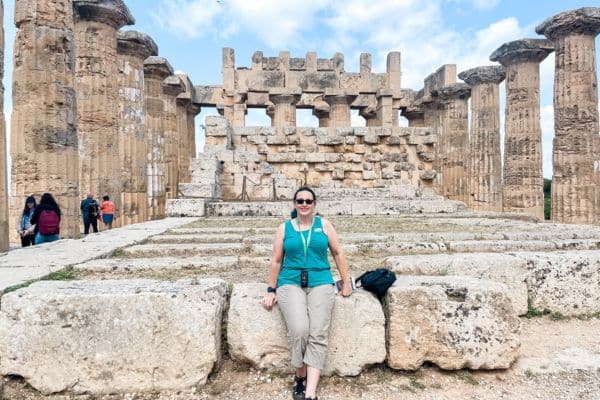
This post may contain affiliate links, which means I’ll receive a commission if you purchase through my links at no extra cost to you. Please read the full disclosure for more information.
Selinunte Archaeological Park Visit Details
Selinunte is located near the villages of Marinella and Triscina. The main entrance closest to the East Hill is in Marinella.
Both are small seaside towns. Marinella seems to have a bit more in the way of places to stay and restaurants, so we stayed there.
- Selinunte Archaeological Park is open from 9 to 6 daily. Visitors must leave the park by 7 p.m. or earlier.
- It’s located at 91022 Marinella di Selinunte, Free municipal consortium of Trapani, Italy . (If you want to take public transportation, you’ll go to Triscina .)
- Tickets cost € 8 (around $8.50 USD).
- Audioguide (which I highly recommend unless you get a guide) is € 5.
- Shuttle cost: € 12 for the longer shuttle ride, which is a 10 km walk.
- The total cost is € 25 (around $27.46 USD) with the ticket, shuttle, and audioguide.
There are bathrooms at the ticket office, Baglio Florio Museum, and the Acropolis. There is a small cafe at the Acropolis.
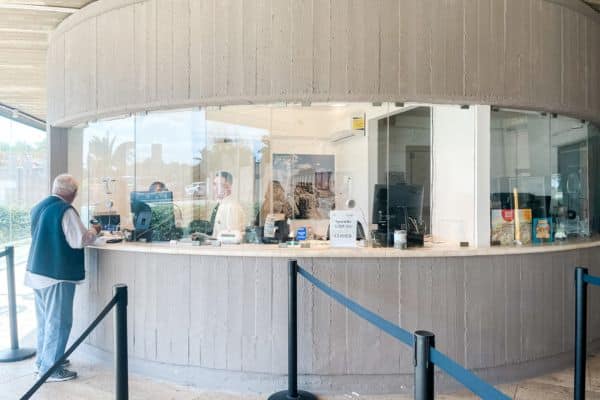
Brief History of Selinunte
Selinunte, named after the wild celery found throughout the area on the river banks, was founded around 650 BC by people from Megara Hyblea (now Augusta). It was located near the sea, and it was important for Mediterranean trade routes. The land was also good for farming.
It grew over the next two hundred years due to political and commercial relationships with the Greeks and Carthaginians into one of the most prosperous cities in Sicily. It was known as Selinous under Greek rule and Selinus under Roman rule.
The city walls were created, and several temples were created. Growth peaked for the city around the fifth century. Selinunte had peaceful commercial relations with the Phoenicians, who settled in areas of Sicily like Agrigento and Syracuse.
In 413 BC, Selinunte fought several battles with nearby Segesta over territory, and the cities were in constant conflict. Segesta was supported by Athens and Carthage (now in Tunisia, northern Africa).
Just a few years later, Carthage’s leader, Hannibal, conquered Selinunte, killing all but women and children. This ended the Greek colony and established Selinunte as a colony under Carthage.
During this time, it was partially rebuilt in the area of the Acropolis. The locals tried to break free from Carthage during the First Punic War. The city was left under Roman rule.
At its peak in around 400 BC, Selinunte was a city of around 30,000. It existed until around 250 BC, when the Romans destroyed and abandoned it.
The colony of Selinunte was rediscovered in the 16th century. Excavations were carried out in the early 19th century, leading to its prominence in visits today.
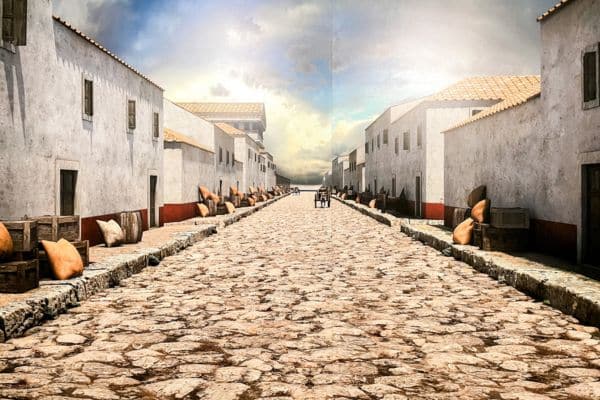
Recreation of Selinous at the Baglio Florio Museum
What to See at Selinunte Archaeological Park
Selinunte is the largest archaeological area in Sicily as well as all of Europe, covering 270 hectares of land (around 670 acres). It’s located in southwest Sicily between two rivers, the Modione River and the Cottone River.
There are five areas of the archaeological site:
- Acropolis —Located near the park’s center, including temples and fortifications.
- Mannuzza Hill —Located near the north of the site with ancient housing.
- East Hill —Located in the east with temples.
- Gaggera Hill —Located in the West, with the Sanctuary of Malophoros.
- The two Necropoleis .
You could easily spend days exploring this huge park’s different areas. Unless you’re an archaeologist or are interested in doing that, you’ll want to focus your time.
I recommend visiting the Acropolis, East Hill, and Gaggera Hill. That’s what the ticket office suggested to us and what our host did as well. Then, if you still want to explore more, you can!
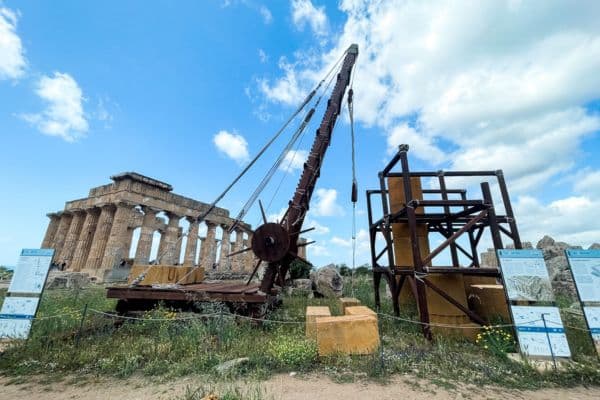
East Hill is a park highlight and worth seeing first. It’s a short walk from the ticket office, so it makes sense to start your tour of Selinunte here. It’s also the location of the only partially reconstructed temple.
In this area, you’ll find the ruins of three temples: Temple E, F, and G. The temples were built parallel to each other, facing east, so the first rays of the sun enter. You’ll also see ancient tools and machinery used to build the temples.
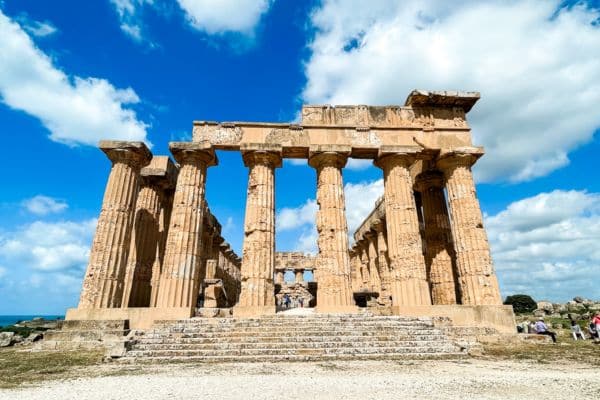
Temple E is the only temple partially reconstructed. It’s a Doric Temple built before 500 BC. It’s believed that it was dedicated to the Greek goddess Hera.
It was built in five phases before it was destroyed by fire around 500 BC. The second construction was completed in around 470 BC. It was built with 15 columns on the long sides and six on each of the short sides. These columns were covered in a layer of white plaster.
An earthquake later toppled the temple, but the columns were rebuilt in around 1958.
You can walk through it and all around the inside, taking in the views. You can see just how massive these stones are and what a feat of engineering building these temples was.
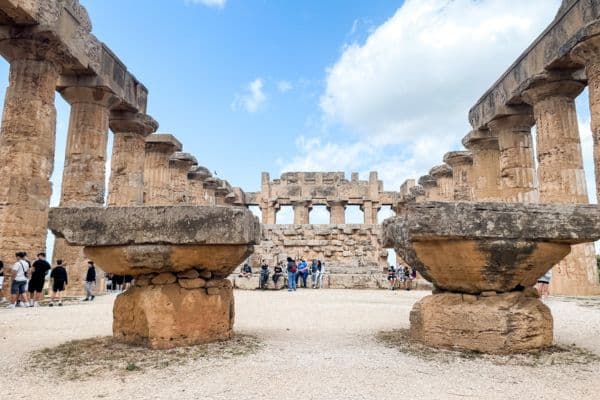
Temples F and G
Both temples F and G have not been rebuilt, so they are in a large pile of rubble.
Temple G was believed to have been a Temple for Zeus, the Greek king of the gods. It was one of the largest temples built in the world as if this time, and the largest in the Greek world.
This temple was designed to compete with the other iconic temples of its time. However, it was never completed.
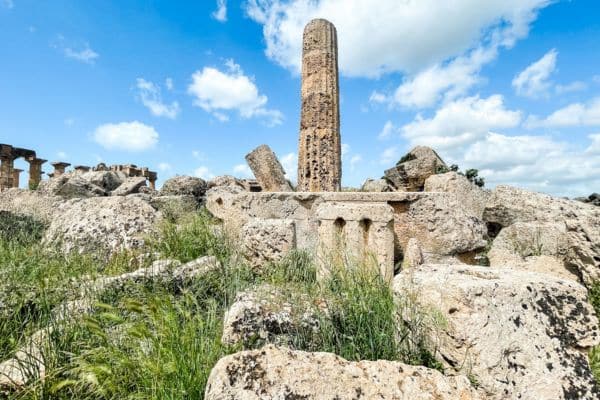
Baglio Florio Museum (Baglio Florio Museo)
This structure was a typical farmhouse built during feudal Sicily. It was built in the first half of the 19th century and was linked to the winemaking business of the Florio family.
During the time it was built, the land was owned by landowners in large plots. There is a mansion built for the landowner on a higher area, representing the elevated position. This structure was where the workers lived.
The museum is well worth a visit as it shows many artifacts from this area. The Institute of Fine Art of New York University worked with the archaeological park in 2006 to excavate the area.
You’ll find items from the temples and some of the areas where people lived in the museum. There’s also a piece of carved stone from the 5th century BC.
There are also items from the excavation of the German Archaeological Institute of Rome, which operated from 1996 to 2007. The focus of this excavation was on the Acropolis.
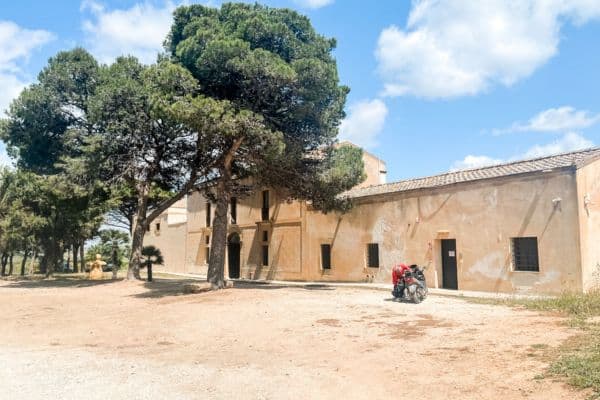
Gaggera Hill
On Gaggera Hill, you’ll find the Sanctuary of Maloferus (meaning apple bearer). This is a reference to the goddess Demeter, whom the sanctuary was dedicated to.
There are also the remains of a wall that was partially constructed in the 19th century.
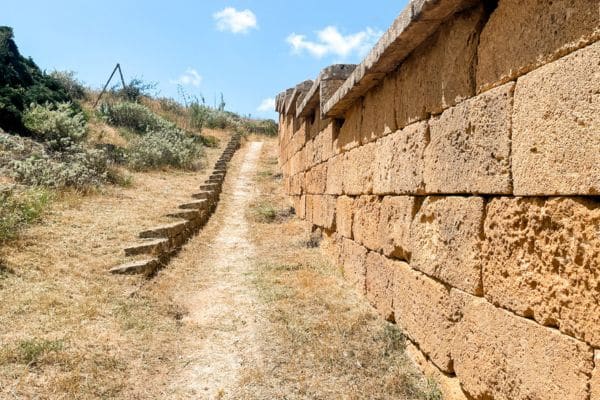
In this area, they found thousands of terra cotta figurines. It’s one of the most important places on the site, and it shows evidence of use as early as the 7th century BC.
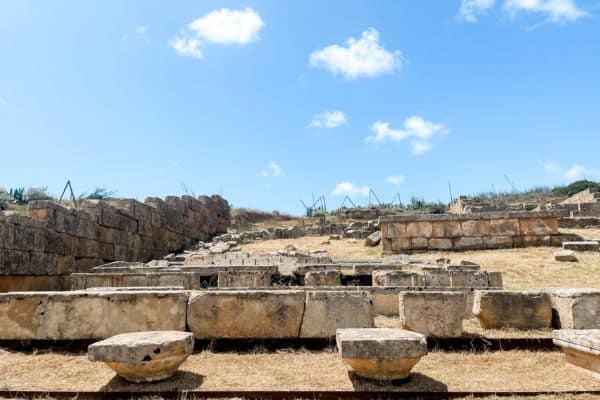
You’ll also see the Sanctuary of Hera, which was partially rebuilt during the excavations.
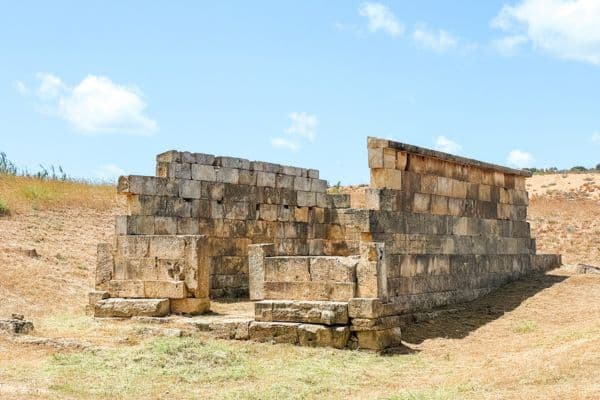
The Acropolis, or city of Selinunte, was ideally located between two elongated hills, later surrounded by a defensive wall. Rivers to the east and west flowed into the bay and served as harbors.
The Acropolis was built on the highest point in the area on the southern hill. It included public and religious buildings, as well as residential areas.
When it was constructed during the 6th century BC, it was organized in a grid plan with parallel streets. You can even still see ruts in the stone roads made by the chariots.
Acropolis Temples
You’ll see sanctuaries and several monumental temples called A, B, C, D, O, and R.
The oldest temples, C and D, are from around the middle of the 6th century BC. They were built with collonades on the eastern part of the Acropolis. Temple D was believed to have been dedicated to Artemis, though it is now thought to be dedicated to Athena, the goddess of war.
Temple R was also built around this time, and it was the first monumental building in Selinus. Vases and terra cotta statuettes were recovered from the site and are located in the museum. An earthquake in around 300 BC destroyed it.
Temple B was constructed around the middle of the 3rd century BC and appears to be a replacement for Temple R. It was built without a colonnade and painted green, unlike the other temples built previously.
Temples A and O were erected later.
These temples have not been reconstructed, though some of the columns remain partially standing. However, there are signs with images and details about each temple so you can get an idea of how they once looked and their size.
You can walk on and through the rocks that once were the temples.
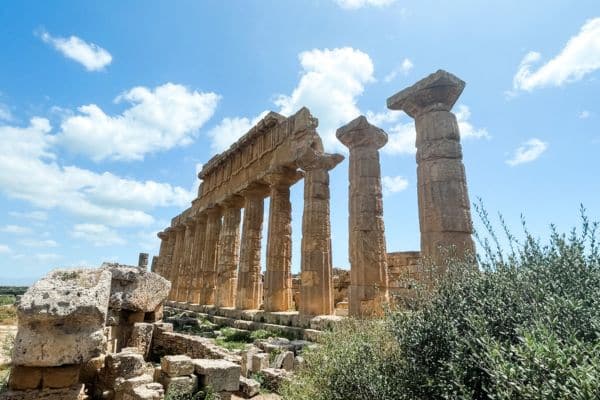
When to Visit Selinunte Archaeological Park
Selinunte is a great place to visit at any time of year. The weather can be quite hot in the summer, and the complex has no shade, so keep that in mind.
Visiting in the spring, fall, and winter may be more comfortable. However, you can visit whenever you’d like!
How Much Time to Spend in Selinunte Archaeological Park
Plan to spend 2-4 hours visiting Selinunte Archaeological Park. The different sets of ruins are not close, and you should prepare for a 30 to 60-minute walk between each of them.
The paths are well-established and easy to follow. They do go uphill, and there’s no shade or water between them.
If you take the little shuttle between them, you can save time. But you’ll still want to spend at least 2 hours visiting, especially if you want to read the information shared and listen to the audio guide.
How to Get to Selinunte Archaeological Park
You have the option to visit Selinunte by car, by public transportation, or by tour. Though costs vary, your best bet is driving or taking a tour if you can.
Selinunte Archaeological Park is located next to the town of Marinella. If you’re driving, plan to stay in Marinella. There are lots of hotels and restaurants in this small town, and it’s easy to walk to the park from any accommodations.
There are two entrances to the park: one in Marinella, which we went to. The other is in Triscina, which you’ll enter through if you use public transportation.
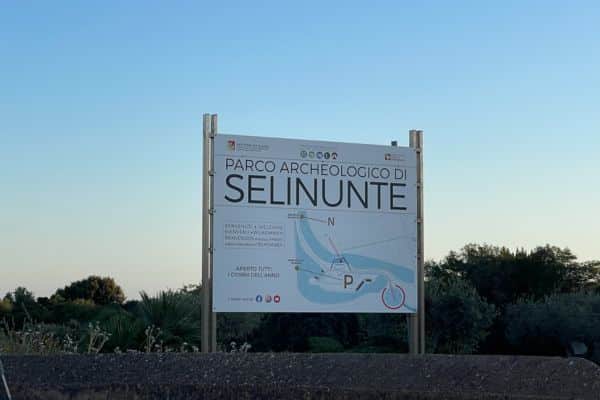
Public Transportation
If you want to take public transportation, you have that option. Take Trenitalia to Castelvetrano from Palermo or Trapani. Then, you need to take a taxi or a bus to Triscina di Selinunte.
In the village of Marinella di Selinunte, you’ll access the park on Selinunte Street. It’s an easy walk from most places in this small village.
If you stay in Triscina di Selinunte or take public transportation, you’ll access the park on Mediterraneo Avenue.
You’ll also find tours to visit Selinunte. This Selinunte tour from Trapani is private, just for your group. There are flexible pickup options in and around Trapani.
Want to see both the Segesta ruins and Selinunte ? You can go on this private tour!
You can also buy your ticket online in advance if you’re interested. No waiting onsite to get in!
I also read that you can get a tour of the park on this cute little train. I didn’t see the cost for that at the ticket office, so ask if you’re interested.
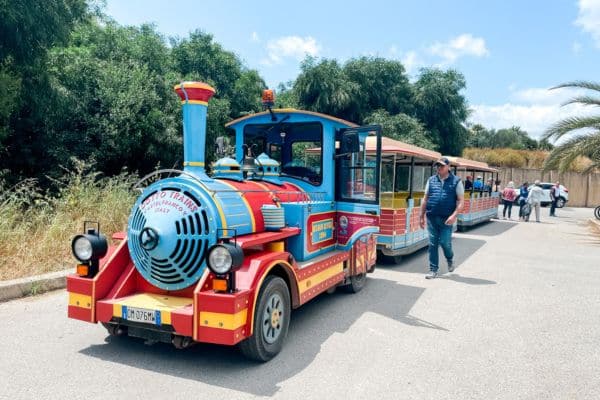
How to Get Around Selinunte Archaeological Park
Selinunte Archaeological Park is quite large, so you’ll do a lot of walking and hiking to get around.
They do offer shuttles that take you to some of the primary sites. If it’s a scorching hot day like when we visited, it’s well worth this little luxury. The property has no shade, and you’ll only find refreshments at the entry and near the Acropolis.
The walks are easy, though long. And though you’ll walk on a pathway for much of it, some areas are uneven and rocky. This is particularly true when walking in areas with ruins in the park.
You are able to walk all around and through the ruins, which is quite nice. However, please be respectful and leave it as you found it.

What to Do Around Selinunte
Visiting the Selinunte ruins isn’t the only thing to do in this area. Here are a couple of other options.

Explore Marinella di Selinunte
This small village is a quaint spot to wander. Take in the gorgeous ocean views and grab a bite at the many fantastic restaurants in the area.
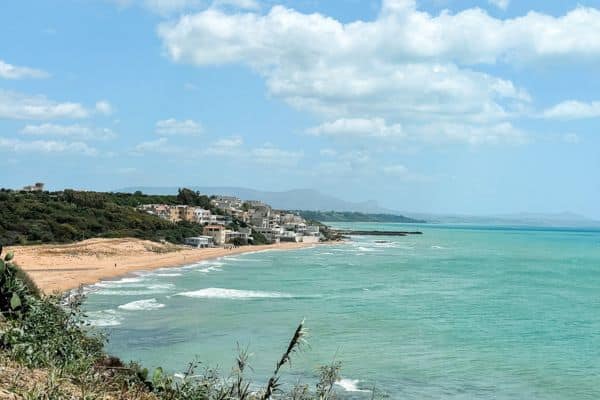
Pierrot Ristorante has a great pizza capriccioso (with tomato sauce, cheese, mushrooms, black olives, and prosciutto). The bruschetta is served on pane nero (“black” local bread).
Baraonda is wonderful with fresh, local seafood dishes like seafood risotto (risotto alla marinara). Both offer ocean views.

Scala dei Turchi
This exquisite white cliff is a fantastic spot at sunset. There is a barricade to keep people from walking on it due to the potential for landslides. However, many people made their way around it to take in the sunset on the way to Agrigento.
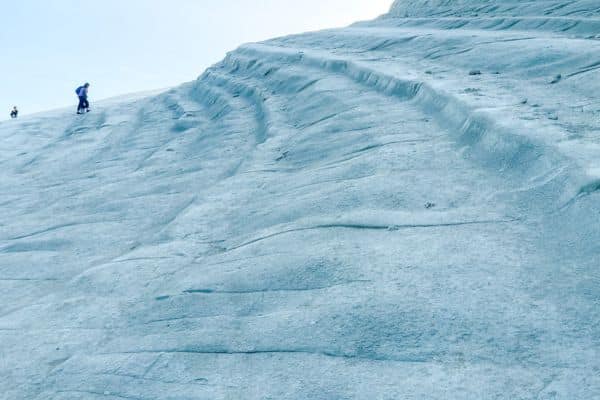
Should You Visit Selinunte Archaeological Park?
There’s something incredible about walking through thousands of years of history. At Selinunte Archaeological Park, you get to do just that.
It’s the perfect compliment to a western Sicily road trip. And it’s really interesting to compare it to the nearby ruins of Segesta and the Valley of the Temples.
You Might Also Like
- What to Expect at Gypset Yoga Retreat Italy—a Detailed Review
- 11 of the Best Things to Do in Capri for a Perfect Day
- What to See When You Visit Pompeii Archaeological Park
- Why You Should Visit the Herculaneum Ruins + Top Tips
- Rome in a Weekend—How to See All of the Top Sites
- 3 Best Umbria Towns to Visit—Gubbio, Perugia, and Assissi, Italy
- Visit the Vatican—A How-to Guide for Visiting Vatican City
- Naples National Archaeological Museum—Why It’s a Must-See + Visit Tips
- Trastevere in Rome—What to See + Top Trastevere Restaurants
- Top Things to Do in Sorrento & Reasons to Stay There
- Segesta Archaeological Park—All You Need to Visit the Segesta Ruins in Sicily
- 8 Top Things to Do in Cefalù in One Day
- Marsala, Sicily—Top Things to See & Do in Two Day s
Like it? Pin it!
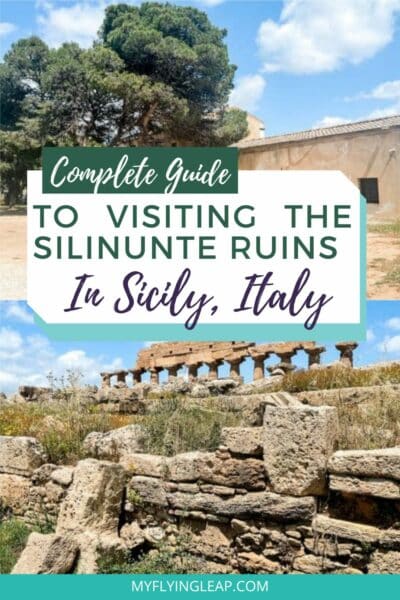
Sam is a travel-obsessed animal lover on a quest to create a life of travel with her dog. She loves learning new things, snuggling a dog, architecture, hiking, and bold red wine. Join her in creating a life to dream about!
One Comment
Thank you, Sam. Your information was very helpful. We are leaving for Sicily in late May for a month. Again, thank you. Thomas
Leave a Reply Cancel reply
Your email address will not be published. Required fields are marked *
AFFILIATE NOTICE
This website uses affiliate links, meaning I may earn a commission if you make a purchase through a link. As an Amazon Associate, I earn from qualifying purchases. Learn more .
- Exciting destinations
- Solo travel
- Travel Tips
- Travel Guides & Itineraries
- Traveling with Pets
- Work with me
Selinunte Archaeological Park

- Facilities 2.0
- Atmosphere 4.0
The largest archeological area in Europe at about 670 acres, this site was once home to one of the largest Greek colonies on the island, dating to 600 B.C. Today, visitors can tour the ruins of seven Doric temples, as well as the necropolis and caves. There are different hiking routes to see the various structures that range from about a quarter-mile to about 3 ½ miles.
Recent visitors said the site does require a lot of walking on uneven ground, and they recommended hiring a guide to fully explain the history of the area.
The park located in the town of Castelvetrano on Sicily's western coast about 80 miles south of Palermo. It is open daily from 9 a.m. to 4:30 p.m., and tickets cost 6 euros (about $6.70). Admission is waived on the first Sunday of the month. It's recommended that you allow at least an hour to visit the site. If you tire of walking, you can take a golf cart between sites for 6 euros. For more information, visit the official website .
Popular Tours

Boat tour Giardini Naxos Taormina Isola Bella Blue Grotto
(361 reviews)
from $ 39.41

Cooking Class with Seaview & Taormina's Market with Chef Mimmo
(413 reviews)
from $ 106.97

Taormina and Castelmola Tour from Messina
(319 reviews)
from $ 101.34
More Best Things To Do in Sicily

#1 Aeolian Islands
There are many lovely islands off the coast of Sicily, and the hardest part may be choosing which ones to see. A popular choice is the Aeolian Islands, located near Messina and composed of seven main islands, which were created by active volcanoes. There you will find incredible sites like a Greek acropolis, a Norman cathedral, beautiful beaches, volcanic vents and even lava running into the sea.
Past visitors recommended visiting Stromboli volcano (seeing it at night when erupting is extra spectacular), the Museo Archeologico Regionale Eoliano on Lipari, the Scalata al Cratere on Isola Vulcano and Chiesa Vecchia di Quattropani on Lipari, as well.
Explore More of Sicily

Things To Do

Best Hotels

You might also like

# 2 in Best Places to Visit in September

# 5 in Best Honeymoons in Europe for 2024

# 1 in Best Beaches in Italy
If you make a purchase from our site, we may earn a commission. This does not affect the quality or independence of our editorial content.
Recommended
30 Fun Fall Weekend Getaways for 2024
Holly Johnson August 29, 2024

The 19 Best Fall Family Vacations for 2024
Amanda Norcross August 27, 2024

The 28 Best Water Parks in the U.S. for 2024
Holly Johnson|Timothy J. Forster May 8, 2024

The 18 Best Napa Valley Wineries to Visit in 2024
Lyn Mettler|Sharael Kolberg April 23, 2024

The 25 Best Beaches on the East Coast for 2024
Timothy J. Forster|Sharael Kolberg April 19, 2024

The 50 Best Hotels in the USA 2024
Christina Maggitas February 6, 2024

The 32 Most Famous Landmarks in the World
Gwen Pratesi|Timothy J. Forster February 1, 2024

9 Top All-Inclusive Resorts in Florida for 2024
Gwen Pratesi|Amanda Norcross January 5, 2024

24 Top All-Inclusive Resorts in the U.S. for 2024
Erin Evans January 4, 2024

26 Top Adults-Only All-Inclusive Resorts for 2024
Zach Watson December 28, 2023

The Selinunte site is located near the southwestern coast of Sicily in the province of Trapani. While Akragas (Agrigento) boasts more standing Greek temples in its “Valley of the Temples,” Selinunte is set in a much more tranquil setting overlooking the sea.
The city of Selinunte proper, known as the “acropolis,” is situated on high ground overlooking the Mediterranean about twenty meters below. The acropolis is located roughly in the center of the large archeological park.
Founded by Doric Greek colonists from Sicily’s Megara Hyblea between 650 and 630 BC, Selinus is mentioned by Diodorus Siculus and Thucydides, and while neither historian is noted for being especially accurate, most of their observations about Selinus appear to be correct.
Typical Dishes
Cous cous soup with fish; Busiate pasta in trapani style; Cassatelle patry stuffed with ricotta cheese and all the delicious dishes which are famous in Sicily.
Local Wines
Grtillo, Grecanico, Alcamo DOC, Insolia, Merlot, Syrah, Catarratto, Marsala wine, Nero d’Avola, Zibibbo, Passito, Moscato
Selinunte and the Archaeological Park
The largest archaeological area in europe ..
Mith, legend, history, culture: the Park of Selinunte it’s even more than this. A coffer of treasures far away millenia yet still alive, right here.
270 hectares that tell about one of the most flourishing classical civilizations of the Mediterranean area.
A rich story that claim still to be discovered, sought after by tourists as well as researchers and academics from all over the world.
Brief history.
From the foundation to the conflict with neighboring Segesta, the intervention of Hannibal until its final destruction: here 7 historical milestones that marked the birth, the rise and fall of one of West’s largest Greek colonies ever.
(by https://en.visitselinunte.com/ )
BIRTH OF SELINUNTE – #1

650-628 B.C.The colonists of Megara Hyblea (now Augusta), guided by the ecistas Pammilo, seek n
ew markets in western Sicily: they found the colony of Selinunte , as rich emporium. The name would stem from “Selinon”, which refers to the leaves of “apio”, a wild parsley that grows abundantly along the banks and in the valley of river Modione .

TWO CENTURIES OF PROSPERITY AND GROWTH – #2
628 – 420 B.C.Selinunte grows establishing itself as Apoikia and weaving political and commercial relationships with the Carthaginians, the Greeks, it builds the Acropolis , the Sanctuary of Malophoros , founds the sub-colony of Eraclea Minoa . It is the dawn of one of the most flourishing Greek colonies.
THE CONFLICT WITH SEGESTA – #3
413 B.C.The expansionist ambitions of Selinunte come to undermine the territory of Segesta. After several battles, ended without serious consequences, it came to a confrontation between mighty alliances : Segesta , supported by Carthage and Athens , and Selinunte , supported by Syracuse , Agrigento and Gela .

THE DECISIVE BATTLE AND THE DEFEAT OF SELINUNTE – #4
409 B.C.The battle marks the decisive victory of the Carthaginian Hannibal Magone , thanks to the non arrival of the auxiliary troops from Agrigento and Syracuse. Hannibal crushes and plunders Selinunte, saving only women and children. Thus this is the end of one of the West’s most glorious Greek colonies.
THE TREATY OF PEACE BETWEEN SYRACUSE AND CARTHAGE – #5
III CENT. B.C.Selinunte attempts a revival, relying on the alliance with Syracuse still on. The tyrant Dionysius becomes the protagonist of several attempts to storm the promontory of Lilybaeum (now Marsala territory) and drive the Carthaginians out, but the failure of the military campaign leads to a peace agreement , and Selinunte ended up in the hands of Carthage .

THE PUNIC AGE – #6
III CENT. B.C.Selinunte is rebuilt by the Carthaginians, but only in the area of the acropolis. They settle elements of Punic civilization, spread new cults, and the old city center of Manuzza becomes necropolis.
THE END OF SELINUNTE – #7
III-II CENT. A.C.During the First Punic War , Selinunte hopes in vain to break free from the yoke of Carthage with the help of the Romans . But the Carthaginians prefer to move their resources to Lilibeo, leaving Selinunte at the mercy of the Romans. Selinunte was never rebuilt and inhabited again. Thus this marks the end of one of the most glorious and important Greek colonies in Sicily.
Read More: https://en.visitselinunte.com/archaeological-park/

HOW TO VISIT SELINUNTE
Private transfer tour from agrigento to trapani: stopovers in selinunte and segesta.
- Transfer Tour
Private Transfer Tour from Agrigento to Trapani: stopovers in Selinunte, Mazara and Marsala
Selinunte archaeological park and belice nature reserve – 1 day.
- Not Included
- South West Side Sicily
Selinunte, CousCous, Marsala Wine and Saltpans


- Agrigento town
- Valley of Temples - Valle dei Templi
- Scala dei turchi
- Phaiax' underground water system
- Cefalù town
- Cefalù Cathedral
- La Rocca di Cefalù
- Aleister Crowley
- Museo Mandralisca, Cefalù
- More photos from Cefalù
- Monreale Cloister
- Monreale Cathedral
- Noto Antica
- Hotels in Noto
- Palermo city
- Archeological Museum, Palermo
- Capuchin Catacombs
- Fontana Pretoria
- La Martorana (Santa Maria dell'Ammiraglio)
- Museum of the Holy Inquisition
- The Norman Palace
- The Palatine Chapel
- Palazzo Abatellis (Galleria Regionale)
- The Palermo Cathedral
- San Cataldo
- San Giorgio dei Genovesi
- San Giovanni degli Eremiti
- Oratorio del Rosario di Santa Cita
- Oratorio del SS. Rosario di San Domenico
- Santa Maria della Catena
- Santa Maria dello Spasimo
- Church of the Gesù
- Quattro Canti
- Botanical Garden
- Villa Palagonia
- Street art in Palermo
- Ragusa town
- Hotels in Ragusa
- Siracusa / Syracuse
- The Siracusia Ship
- The Cathedral
- The Archeological Park in Siracusa
- The Roman Amphitheatre
- The Greek Theatre in Taormina
- Taormina town
- Isola Bella
- Baron von Gloeden
- Trapani town
- Grotta Mangiapane (Scurati)
- Hotels in Trapani
- Palazzo Adriano
- Castelbuono
- Linguaglossa
- Termini Imerese
- Agrigento: The Valley of Temples
- Siracusa: Archeological Park
- Halaesa Arconidea
- Villa Romana del Casale
- The Roman Amphitheatre in Syracuse
- The Archeological Park in Syracuse
- Greeks in Sicily
- The Sicilian Baroque
- Villa Palagonia - film location
- More photos: Villa Palagonia
- The Duomo in Siracusa
- Giacomo Serpotta
- Oratorio di San Lorenzo
- Street art in Sicily
- Normans in Sicily
- Arabs in Sicily
- People in Sicily
- Life in Sicily
- Death in Sicily
- Crucifixes in Sicily
- Film locations in Sicily
- The White Lotus S2 locations in Sicily
- Cars in Sicily
- Churches in Sicily
- Easter in Sicily
- Food in Sicily
- Arancini / arancine
- Weddings in Sicily
- Cats in Italy
- Birds in Sicily
- Column capitals in Sicily
- Insects in Sicily
- Lizards in Sicily
- Tuna Fishing
- Wagner in Sicily
- The contributors
- Sources and recommended reading
- Off topic: New York
- Off topic: Napoli
- Off topic: London
- Off topic: Ravenna
- Web Statistics 2016
Selinunte Archeological Park
All photos unless otherwise stated: Per-Erik Skramstad © Wondersofsicily.com
The ruins of the Ancient Greek town of Selinunte is one of the most important and impressive Classical sites in Sicily. It is the largest archeological park in Europe.
Selinunte - Selinous for the Greeks, Selinus for the Romans
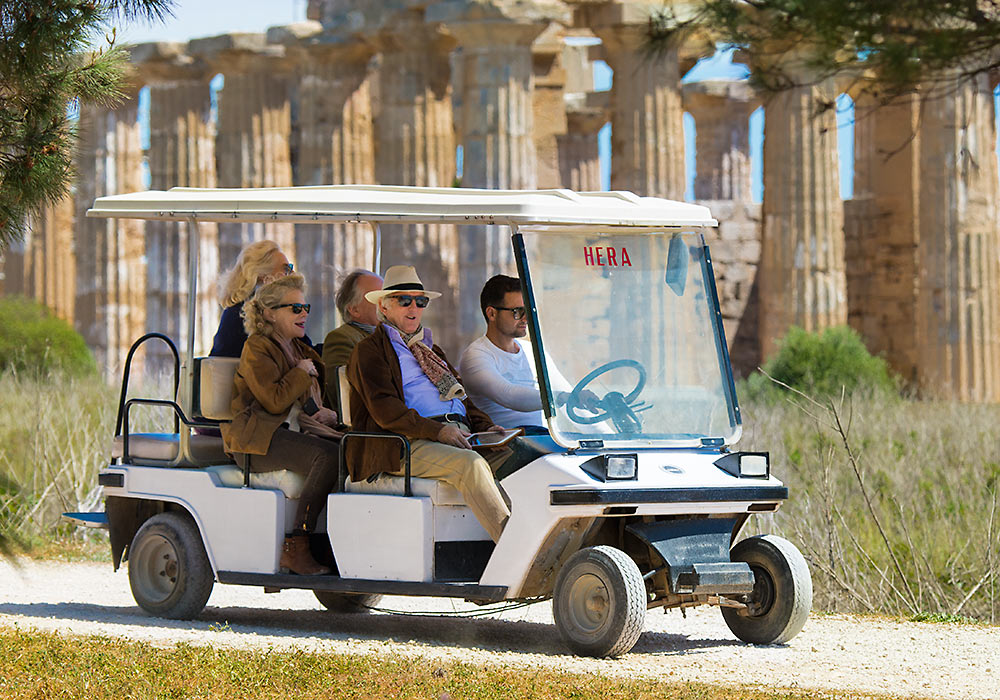
In 414 BC hostilities flared up between Selinus (Selinunte) and Segesta . Since Segesta didn't get any help from Akragas (Agrigento), they went to to Athens during the winter 416/415 to beg for help. The Athenian expedition in Sicily (415-413 BC), however, was a complete disaster for Greece. Later Segesta asked Carthage for help, leading to the total destruction of Selinus by the hands of Carthage.
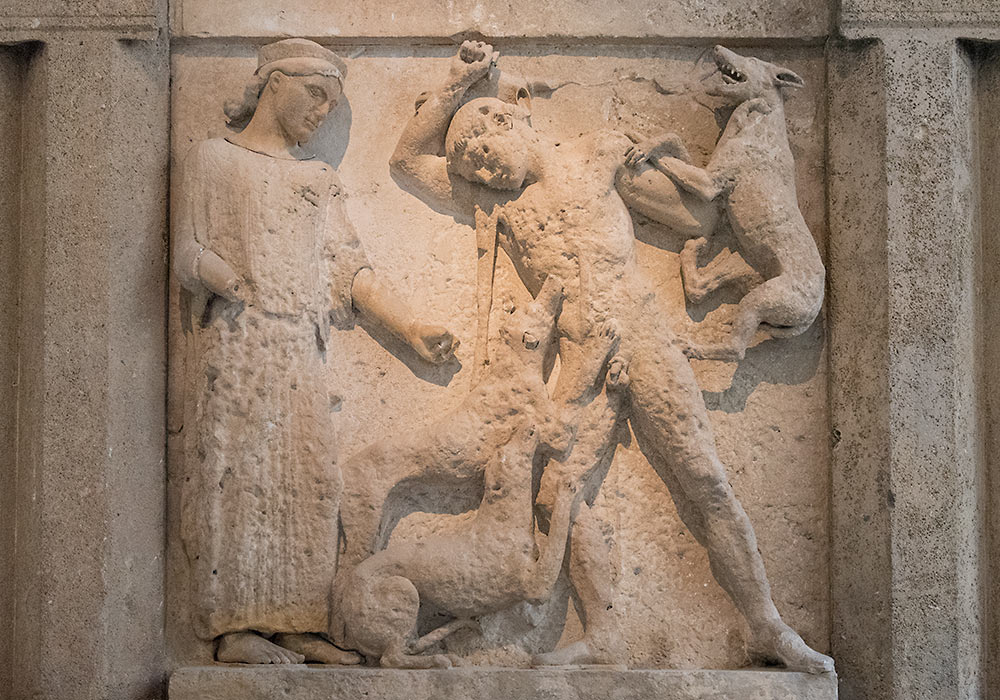
Actaeon punished for having seen Artemis, the goddess of hunting, naked. Selinunte, Temple E, 460-450 BC. Limestone and marble. Archeological Museum, Palermo .
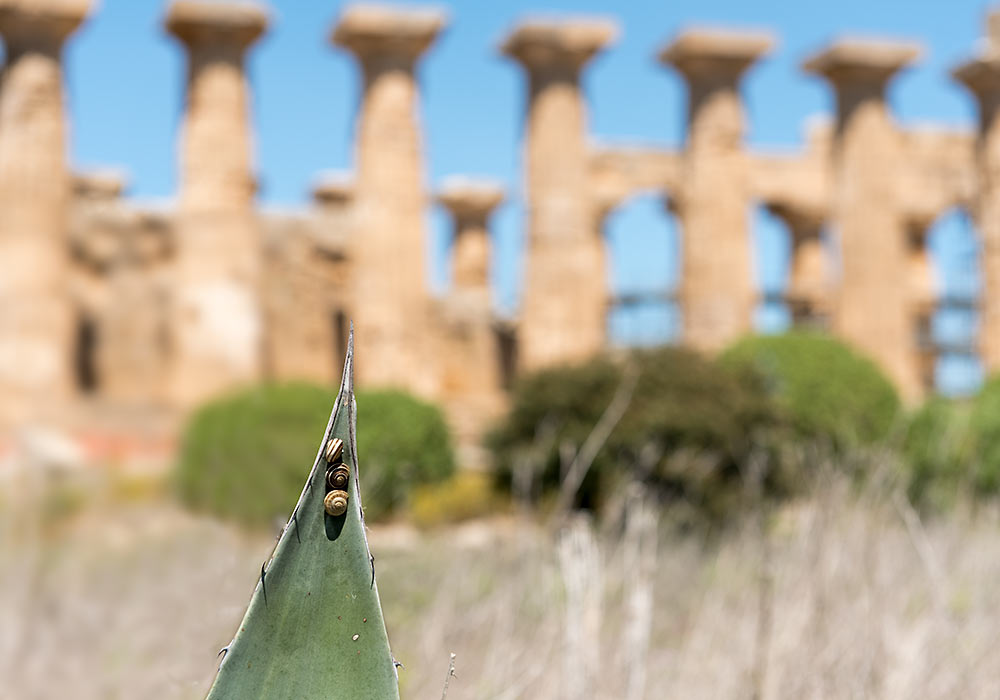
Selinunte was early brought into contact and collision with the Carthaginians and the native Sicilians in the west and northwest of the island. As early as 580 BC the Selinuntines were engaged in hostilities with the people of Segesta, and disputes and hostilities seem to have been of frequent occurrence between Segesta and Selinunte.
After a ten-day siege in 409 BC, Selinunte was taken by the Carthaginians and Segesta. According to sources, 16,000 citizens of Selinunte were slain, 5,000 made prisoners, and 2,600 under the command of Empedion escaped to Agrigentum (Agrigento).
During the First Punic War we again find Selinunte subject to Carthage, and its territory was repeatedly the theater of military operations between the contending powers. But before the close of the war (about 250 BCE), when the Carthaginians were beginning to contract their operations, and confine themselves to the defense of as few points as possible, they removed all the inhabitants of Selinunte to Lilybaeum and destroyed the city.
Votive bust from Selinunte. 5th century BC, now in the Archeological Museum, Palermo.
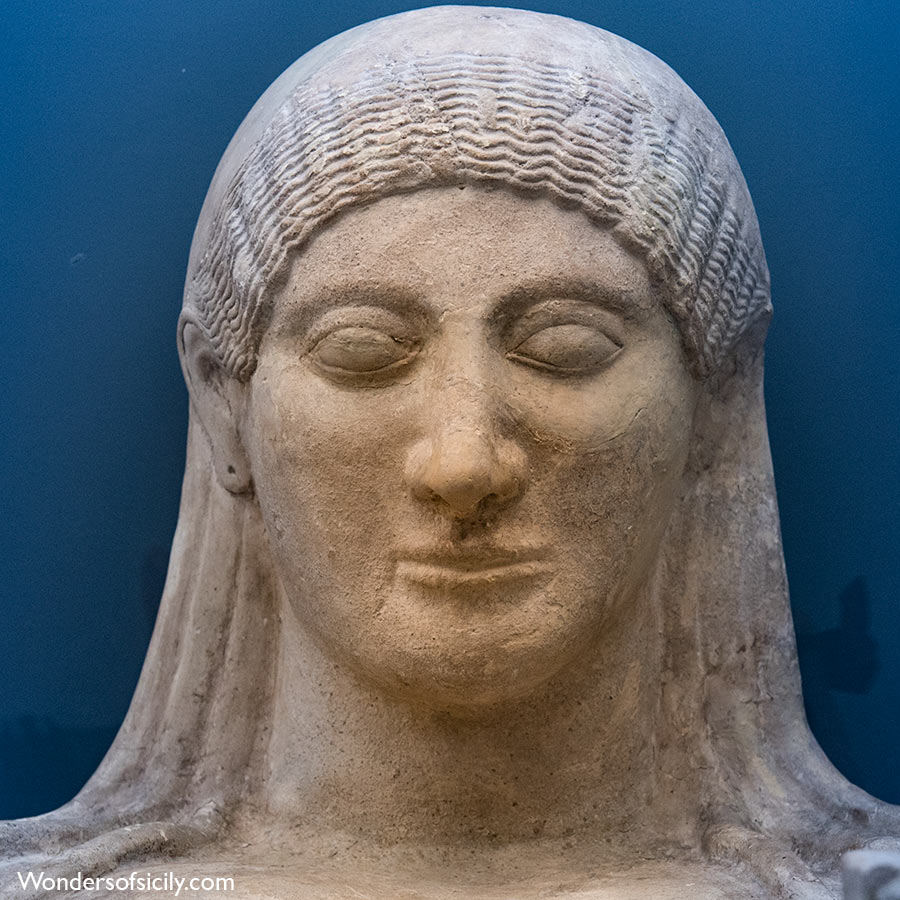
Source: Roma Numismatics Ltd (with permission)
The name Selinunte is derived from Ancient Greek selinon – wild parsley that grew on the spot. For the same reason, they adopted the parsley leaf as the symbol on their coins.
Description: Sicily, Selinos AR Litra. Circa 530-500 BC. Selinon leaf / Selinon leaf in incuse circle. SNG ANS 687. 0.72g, 10mm, 5h. Very Fine. Rare. From the Mark Christenson Collection
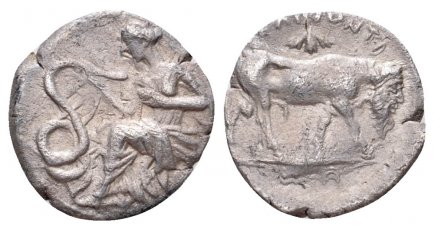
Description: Sicily, Selinos AR Litra. Circa 410 BC. Nymph seated left on rock, right hand raised above her head, extending her left hand to touch coiled serpent before her / Man-headed bull standing right; selinon leaf above, ΣEΛINONTION around. SNG ANS -; SNG Copenhagen -; SNG Lloyd 1270. 0.72g, 12mm, 10h. About Very Fine. From the Mark Christenson Collection; Ex ACR 3, 31 May 2011, lot 67.
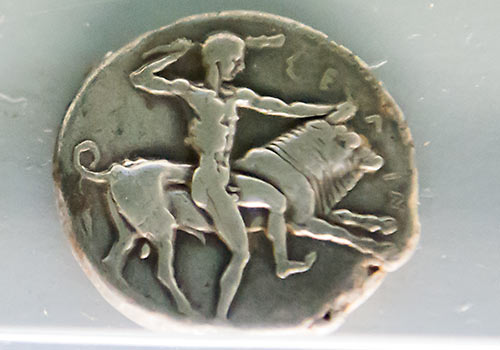
Coin from Selinunte. (Mandralisca Museum, Cefalù) Photo: Per-Erik Skramstad / Wonders of Sicily
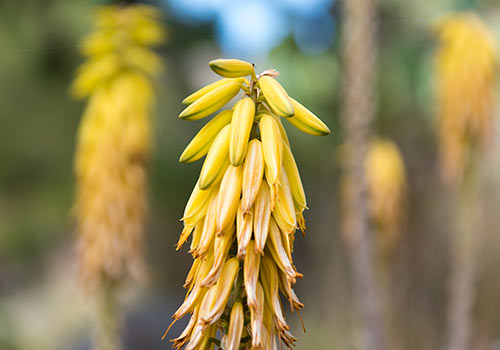
Click here for photos of plant life in Sicily . Photo: Per-Erik Skramstad / Wonders of Sicily
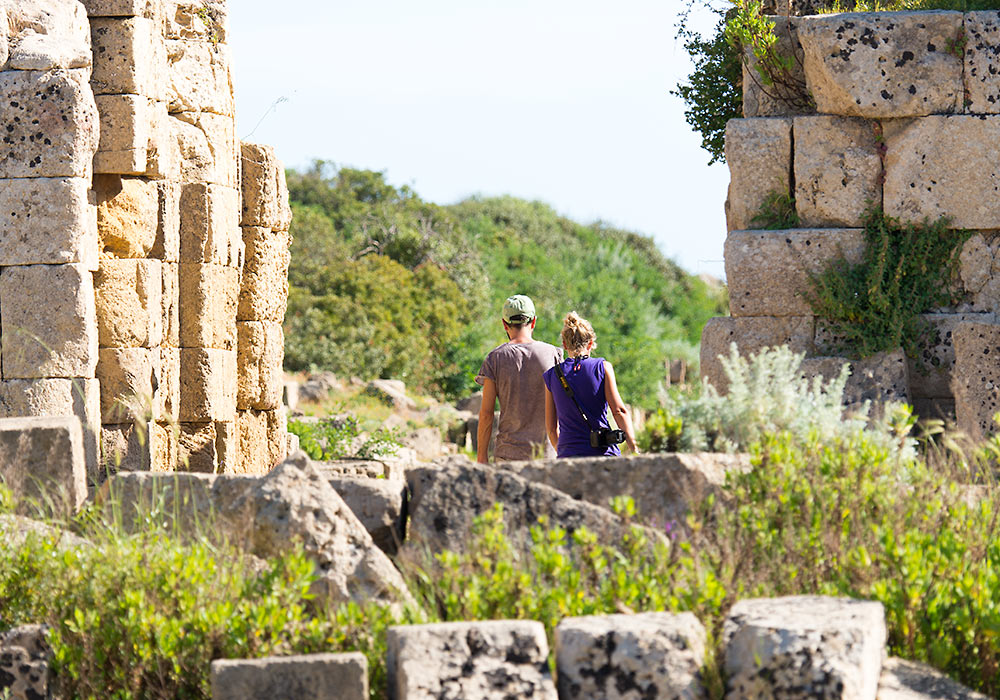
Young and old at Selinunte Archeological Park.
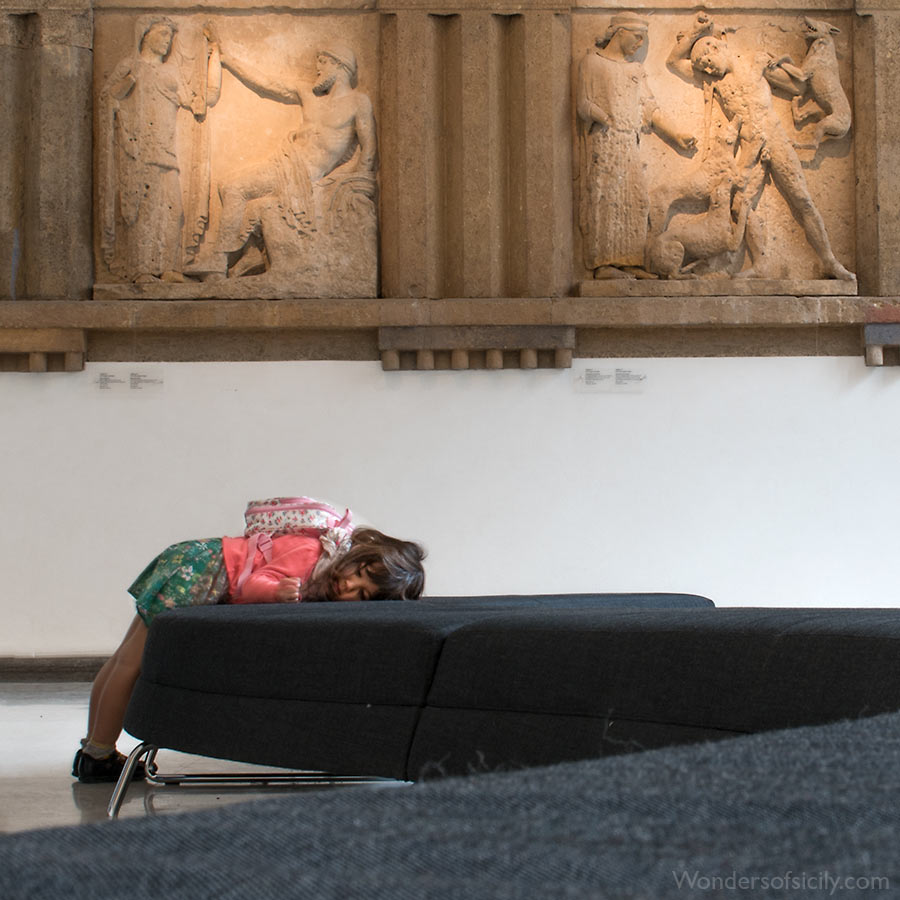
Boooooring...
The metopes in the background are from Temple E in Selinunte, now in the Archeological Museum in Palermo.
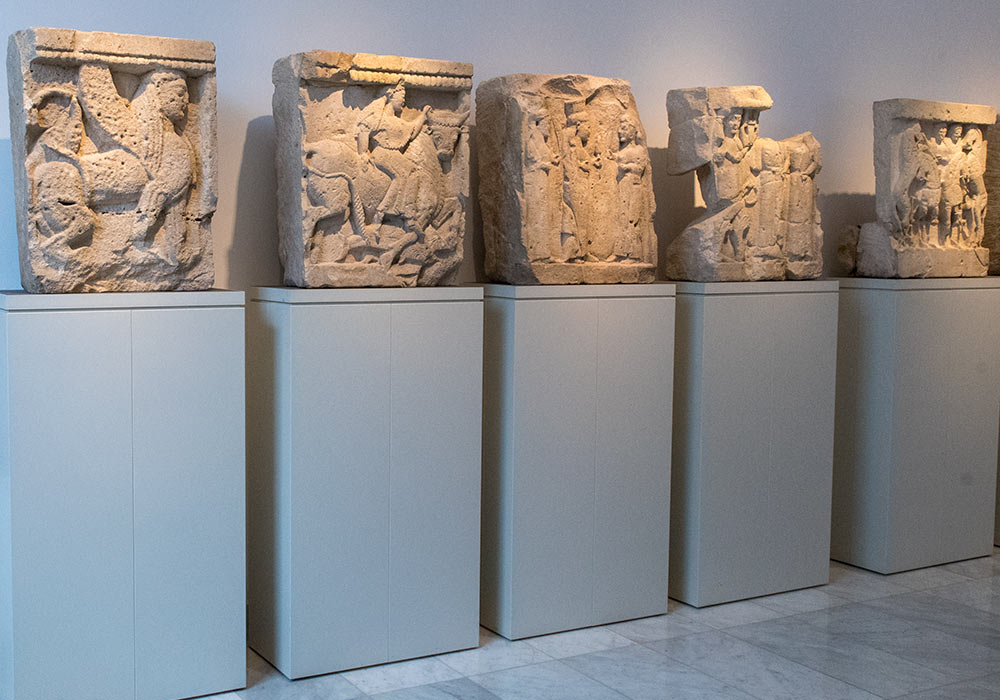
The small metopes. Selinunte, 560-550 BC.
Video: The Best of Sicily by Rick Steves
Spectacular view of Selinunte from helicopter. According to Thucydides , Selinunte was founded by the Greek colony Megara Hyblaea (near Augusta).
It was actually not before the 16th century that Selinunte was rediscovered. More systematic excavations began in 1809 (fruitless) and in 1822 (by William Harris and Samuel Angell).
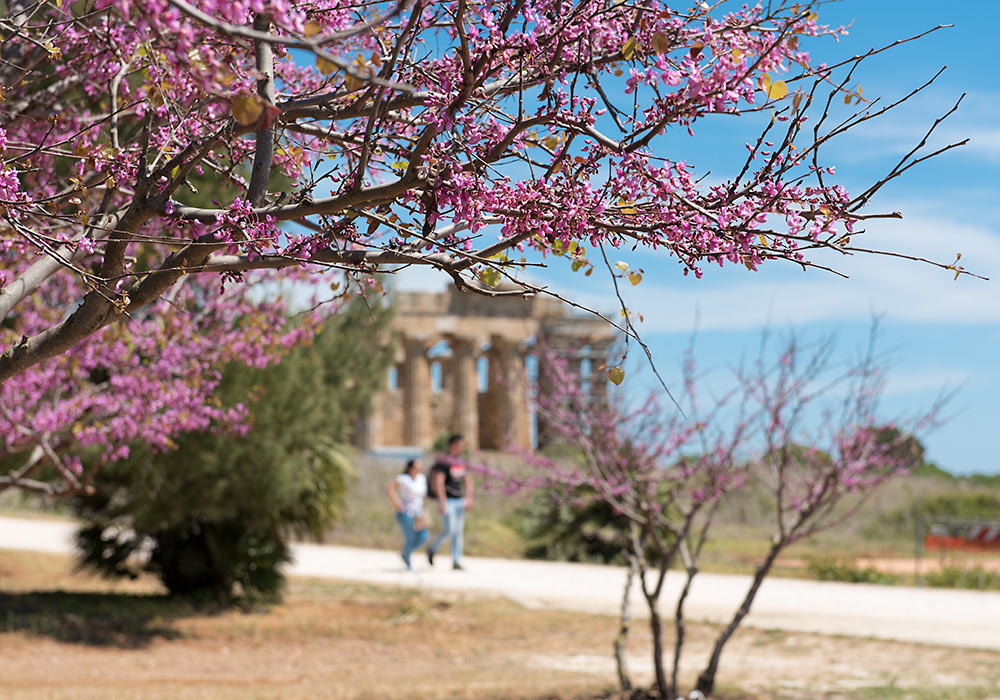
Columns at Selinunte Archeological Park.
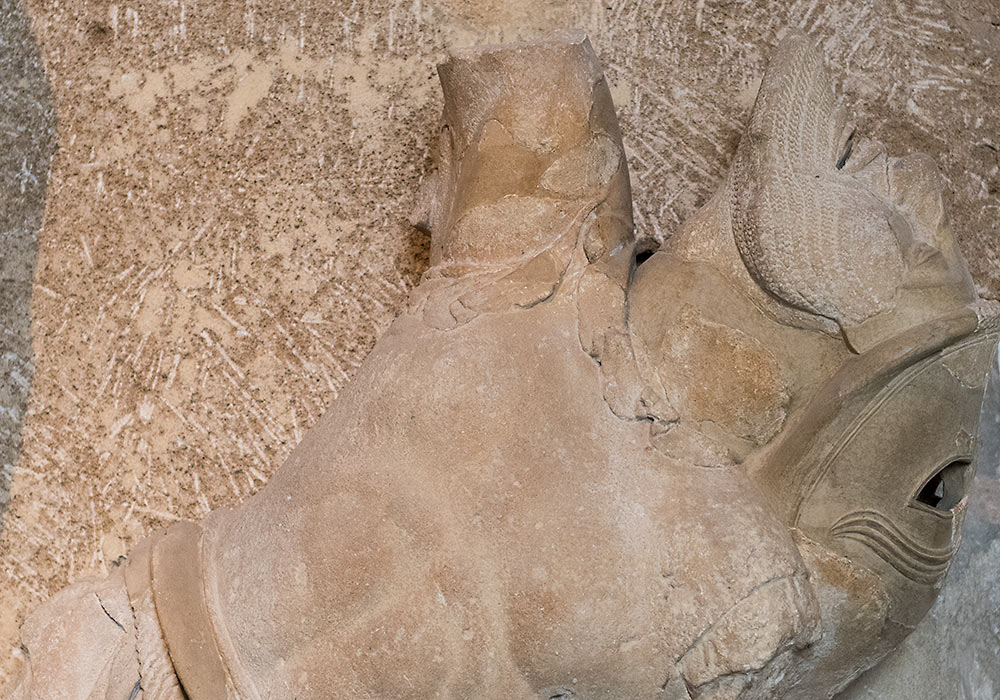
Selinunte, Temple F (490-480BC): Fragment of a metope showing a dead giant. Archeological Museum, Palermo.
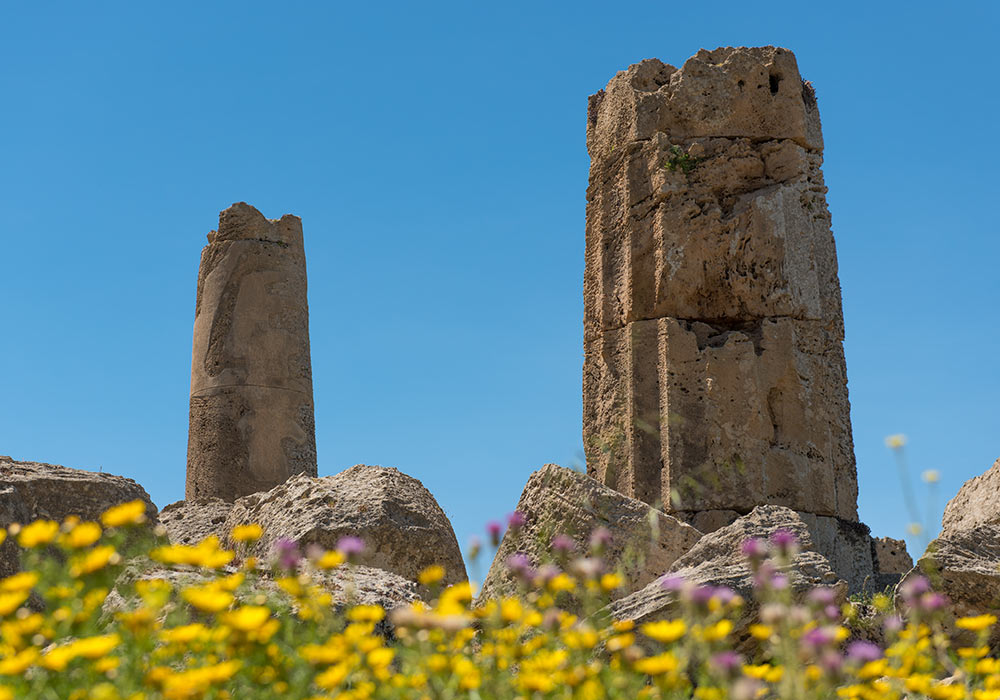
Ruins at Selinunte.
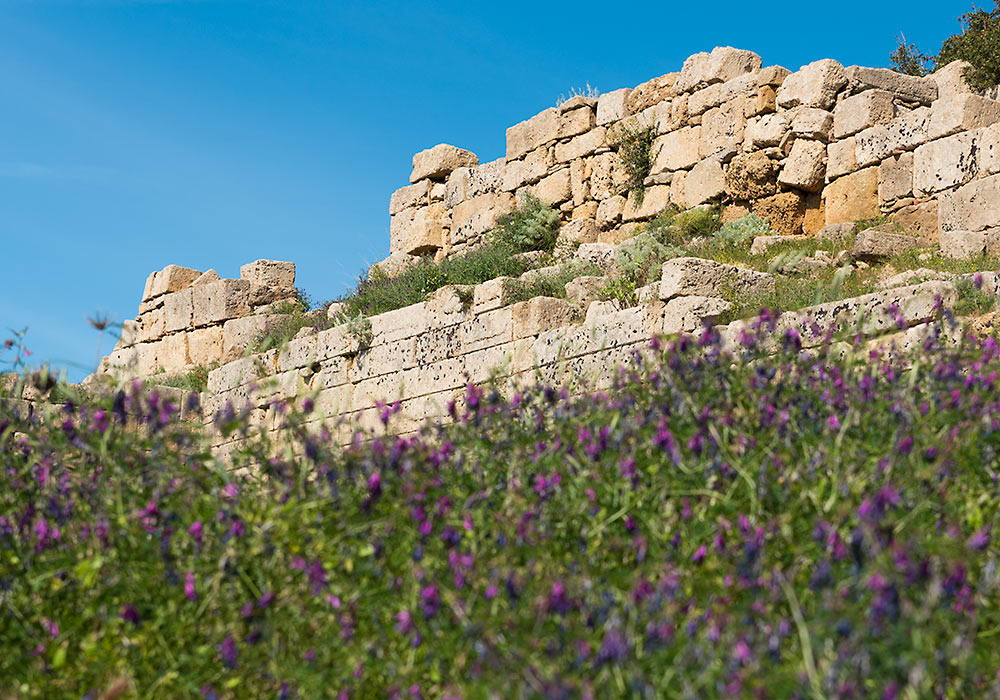
The Doric Temple E (490-480 BC) at Selinunte was probably dedicated to Hera. The columns were re-erected in 1958 after having been toppled by an earthquake.
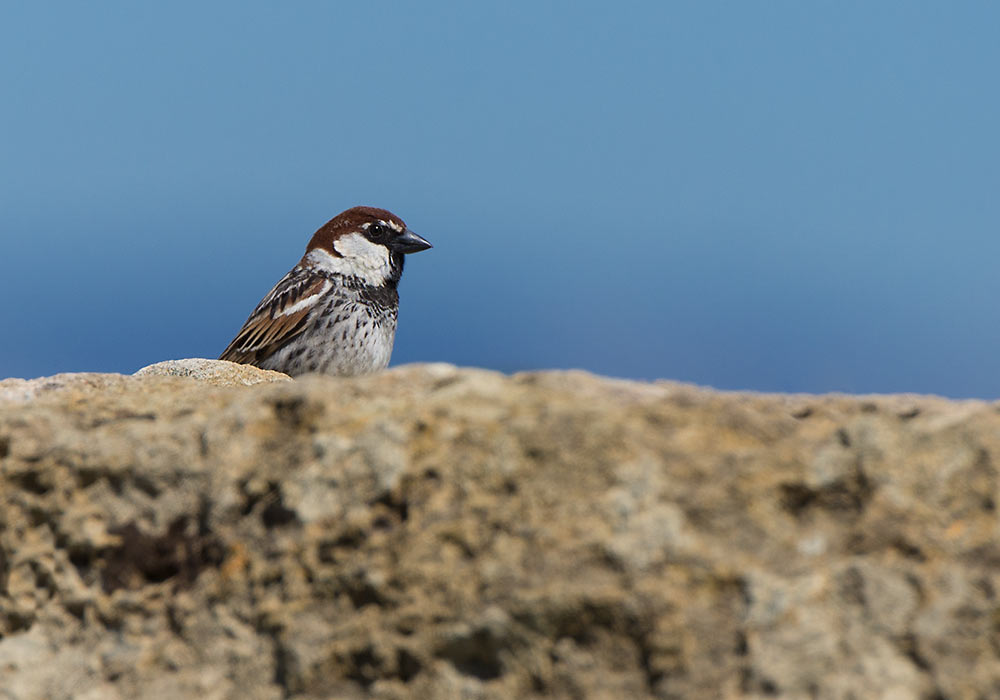
Selinunte, Sicily: Temple E. The columne were re-erected in 1958. The temple was built 490-480 BC. Four of the metopes can be seen in Palermo's archeological museum. Some 70 years later it is estimated that the city had 30.000 inhabitants. The archaeological site contains five temples centered on an acropolis. Of the five temples, only the Temple of Hera, also known as "Temple E", has been re-erected. Photo: AdiJapan / Wikipedia CC BY-SA 3.0
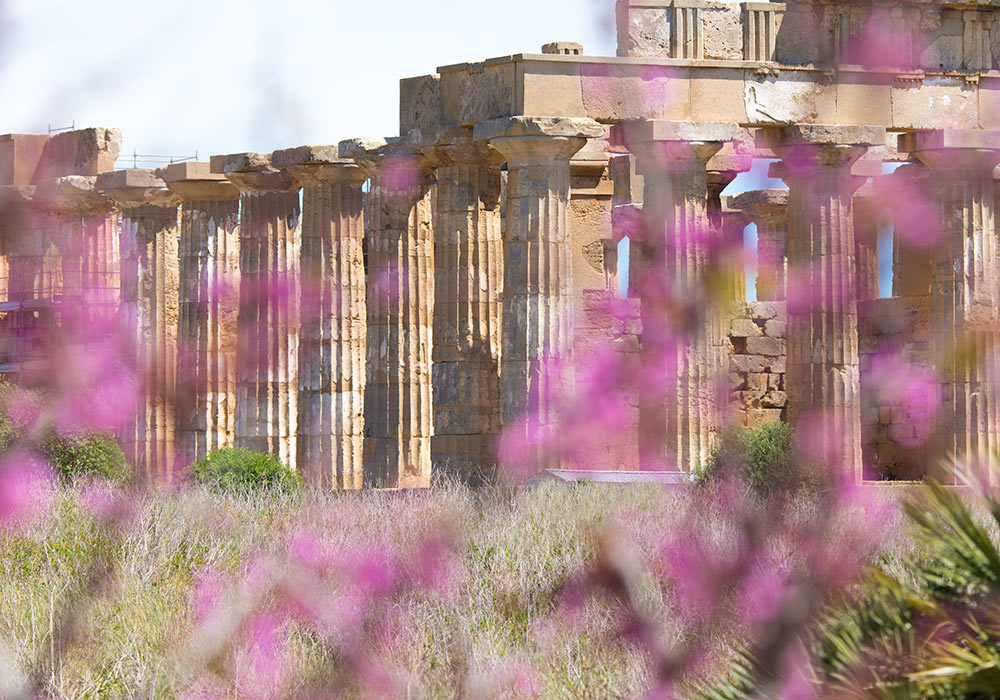
Selinunte, Temple E.
The Italian chef Giorgio Locatelli tells of his soft spot for Sicily: "The most famous archaeological site is the Valley of Temples in Agrigento , but I love Selinunte , further up the coast. The landscape is wilder there. I walk from the beach up and around the remains of the acropolis, necropolis and old market, all from about 650BC. The view is incredible and you can feel the presence of the ancient Greeks ." Read more in The Guardian
Wonderful Sicily
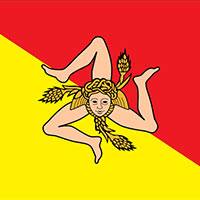
Palermo - Taormina - Cefalù - Syracuse - Agrigento - Catania - Enna - Noto - Modica
Sicilian Sites on UNESCO's World Heritage List
Web Statistics for Wondersofsicily.com
Do you see any errors or have any suggestions, please write to the editor …
© Per-Erik Skramstad / The Wonders of Sicily LinkedIn -
About The Wonders of Sicily
Developed by Webkommunikasjon
All photographs © Per-Erik Skramstad unless otherwise stated
Post comment
or continue as guest

IMAGES
VIDEO
COMMENTS
Journeying from Palermo to Selinunte Archaeological Park invites visitors to step back in time, where the remnants of ancient Greek civilization await discovery. This 7-hour excursion, complete with hotel pickup and a knowledgeable driver, reveals towering temples and sprawling ruins that whisper tales of gods and glory. As the Mediterranean's azure waves lap against the shores, travelers ...
Selinunte: Archeological Park Entry Ticket and Pemcards. Pre-book your entry ticket for the Selinunte Archeological Park and skip the ticket lines. Discover the immense artistic and archaeological heritage of Sicily at the largest archaeological area in Europe with over 2,500 years of history. Capture your visit with a digital photo postcard.
The Selinunte Archaeological Park can be accessed for just €6 per person and is best visited with a rental car; there's a large car park on-site. It will take around an hour from Trapani and an hour and a half from Palermo. From Selinunte, you can reach Agrigento in just over an hour too. If you're relying on public transport, the best ...
The archaeological park of Selinunte is among the largest in Europe. Indeed, Selinunte had an urban plan on the scale of a megalopolis and was dominated by the acropolis where we find the archaic temples named C and D. On the eastern hill, we find the sacred buildings, denominated as temple G, E, F. Specifically, the archaeological park is ...
Segesta and Selinunte: Tour from Trapani. Visit the old city of Segesta, which was founded by the Elimi. It survived many enemy armies, weather and, earthquakes in the area. ... Currently, there resides the largest archaeological park in Europe. Then enjoy some free time. You will enjoy lunch in a typical restaurant near the archaeological site ...
Spend a day exploring the magnificent Archaeological Park of Selinunte and Cave di Cusa. Selinunte, an ancient Greek city located on the south-western coast of Sicily, is of great importance for its archaeological park. The thousand-year-old origins, the legends, the myths, the scent, the colors of its sea, the white beaches, make what was one of the most important Greek colonies a unique ...
This is Selinunte! In ancient times, rich and populous, today it's included in the largest archaeological park in Europe (take a look at our tour) that covers 270 hectares, with the acropolis, the necropolis and the three hills. The temples included in this vast area are among the most significant examples of Doric architecture, marked by ...
Selinunte Archaeological Park is open from 9 to 6 daily. Visitors must leave the park by 7 p.m. or earlier. It's located at 91022 Marinella di Selinunte, Free municipal consortium of Trapani, Italy. (If you want to take public transportation, you'll go to Triscina .) Tickets cost € 8 (around $8.50 USD).
Make the most of your time at the archaeological park with skip-the-line entry; ... 7 Selinunte Guided tours. 8 Selinunte Private tours. 9 Selinunte Tours. Cities in Italy. 1 Rome. 2 Venice. 3 Florence. 4 Milan. 5 Naples. 6 Sorrento. 7 Genoa. 8 Pompei. 9 Verona. 10 Pisa. 11 Siena. 12 Catania. 13 Turin. 14 Palermo. 15 Taormina.
SELINUNTE ARCHAEOLOGICAL PARK AND BELICE NATURE RESERVE - 1 DAY. Season: all year available on request Duration: One Day Tour Time: full day from h 8.30AM Season: All year round Meeting Point: to be advised at time of booking Hiking Details: Km: 11 | 120 mt elevation gain Level of Difficulty: Easy Hiking Tour. Good fitness required.
Selinunte Archaeological Park is ranked #4 out of 15 things to do in Sicily. See pictures and our review of Selinunte Archaeological Park. ... Boat tour Giardini Naxos Taormina Isola Bella Blue ...
70. About. Spend a day exploring the magnificent Archaeological Park of Selinunte and Cave di Cusa. Selinunte, an ancient Greek city located on the south-western coast of Sicily, is of great importance for its archaeological park. The thousand-year-old origins, the legends, the myths, the scent, the colors of its sea, the white beaches, make ...
The city of Selinunte proper, known as the "acropolis," is situated on high ground overlooking the Mediterranean about twenty meters below. The acropolis is located roughly in the center of the large archeological park. Founded by Doric Greek colonists from Sicily's Megara Hyblea between 650 and 630 BC, Selinus is mentioned by Diodorus ...
Columns at Selinunte Archeological Park. Selinunte, Temple F (490-480BC): Fragment of a metope showing a dead giant. Archeological Museum, Palermo. ... Some 70 years later it is estimated that the city had 30.000 inhabitants. The archaeological site contains five temples centered on an acropolis. Of the five temples, only the Temple of Hera ...
Selinunte: Archeological Park Entry Ticket and Pemcards. Pre-book your entry ticket for the Selinunte Archeological Park and skip the ticket lines. Discover the immense artistic and archaeological heritage of Sicily at the largest archaeological area in Europe with over 2,500 years of history. Capture your visit with a digital photo postcard.
Upon booking this private tour to Selinunte Archaeological Park and Cusa Caves from Palermo, travelers can expect convenient pickup arrangements and accessibility options provided for a seamless and inclusive experience. Transportation options include wheelchair-accessible vehicles, ...
Explore Volgograd the way you want to with your own private tour guide! Forget about getting flustered with maps. For lifelong memories of Volgograd tailored to you, book a private tour effortlessly online with Tripadvisor.
Plus the park is generally very well kept and at the end has nice views across the Volga river towards Volgograd. Read more. Review of: Lenin Square. ... Rides Olympic Beach Carolina Beach Medusa Cruises 4-Hour Chill Out-Turtle Cruise In Protaras -Lunch Unique Mangroves SUP tour Kusadasi Buggy Safari Adventure Paphos & Curium (Larnaca, Agia ...
Top Volgograd Adrenaline & Extreme Tours: See reviews and photos of Adrenaline & Extreme Tours in Volgograd, Russia on Tripadvisor.
Selinunte Archeological Park. Tours. 5 activities found. Activity ranking. Activities on the GetYourGuide marketplace are ranked by a combination of factors including popularity, diversity, availability, customer rating, cancellation rate, performance over time, and amount of revenue generated. ...
The culture and recreation park Volzhky is located on the southwestern edge of the town, near the banks of the Akhtuba river. It occupies part of the the medieval archaeological site of Bezrdonoe Gorodishche. The former village of Bezrodnoe (or Verhneakhtubinskoe) was integrated into the city of Volzhsky. Most traces of the medieval settlement are long obliterated by modern construction and ...